Of the downtown stores we remember from the mid-twentieth century, it was one of the first to be founded, one of the first to propagate satellite stores in the suburbs, and one of the few whose downtown building has survived.

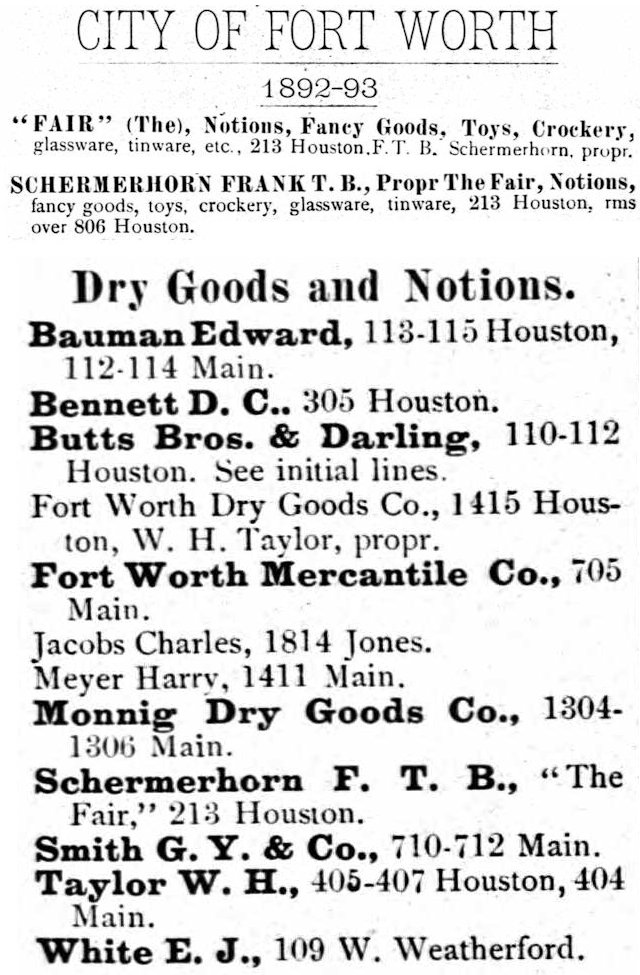 The Fair opened in 1890 as a small dry goods store. Its founder was Frank Ten Broeck Schermerhorn. Schermerhorn was born in 1861 in Michigan, although he was a member of a Dutch family long established in New York.
The Fair opened in 1890 as a small dry goods store. Its founder was Frank Ten Broeck Schermerhorn. Schermerhorn was born in 1861 in Michigan, although he was a member of a Dutch family long established in New York.
In the beginning The Fair sold mostly household items: notions, toys, tinware, glassware, bird cages, lead pencils, clothes pins. Such stores were the Mott’s and Kress stores of their day. They were also called “racket stores,” possibly because of the noise that resulted when their pots and pans were handled.
When The Fair opened, Monnig’s had been in business one year.
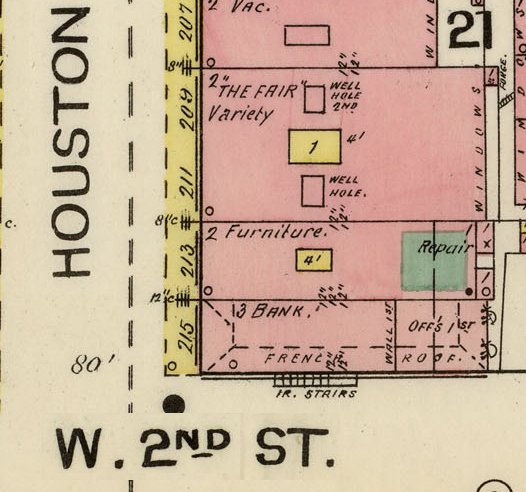 The Fair began with twenty-five feet of storefront on Houston Street.
The Fair began with twenty-five feet of storefront on Houston Street.

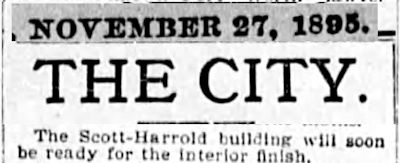 By 1896 Schermerhorn had moved his store into the Scott-Harrold Building (1895) at Main and 5th streets, built in 1895 by Winfield Scott and fellow capitalist E. B. Harrold.
By 1896 Schermerhorn had moved his store into the Scott-Harrold Building (1895) at Main and 5th streets, built in 1895 by Winfield Scott and fellow capitalist E. B. Harrold.
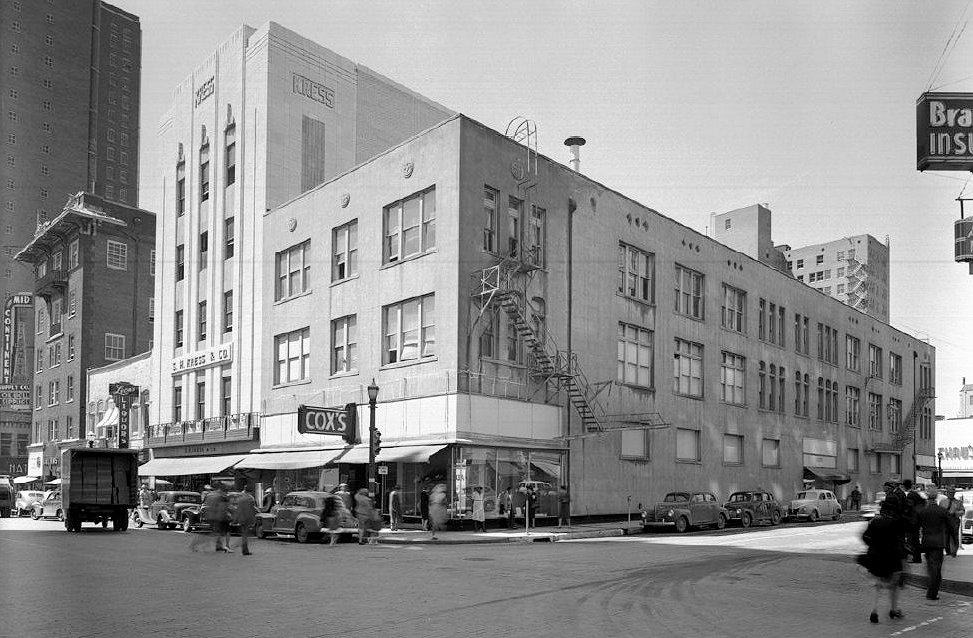 Believe it or not, this is the 1895 Scott-Harrold Building in 1946 after a severe makeover eliminated the ornate architecture of the 1890s.
Believe it or not, this is the 1895 Scott-Harrold Building in 1946 after a severe makeover eliminated the ornate architecture of the 1890s.
 With the new century The Fair was catering to the fair sex. The only merchandise The Fair stocked for men was ties, socks, and handkerchiefs.
With the new century The Fair was catering to the fair sex. The only merchandise The Fair stocked for men was ties, socks, and handkerchiefs.
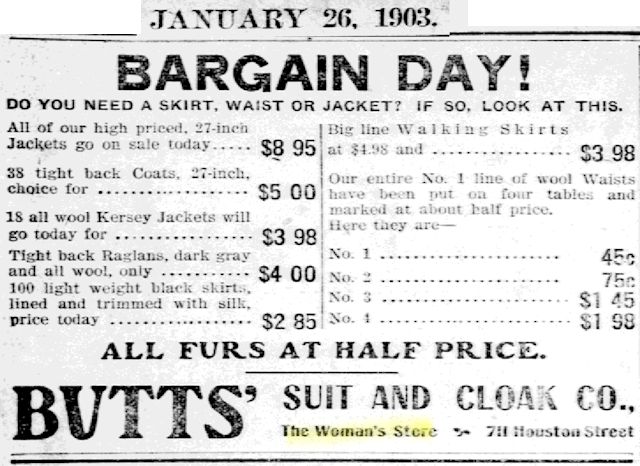 But all’s (The) Fair in love and retail: Schermerhorn had competition. In fact, brothers Cyrus and Reuben Butts branded their Butts’ Suit and Cloak Company store as “the woman’s store.”
But all’s (The) Fair in love and retail: Schermerhorn had competition. In fact, brothers Cyrus and Reuben Butts branded their Butts’ Suit and Cloak Company store as “the woman’s store.”
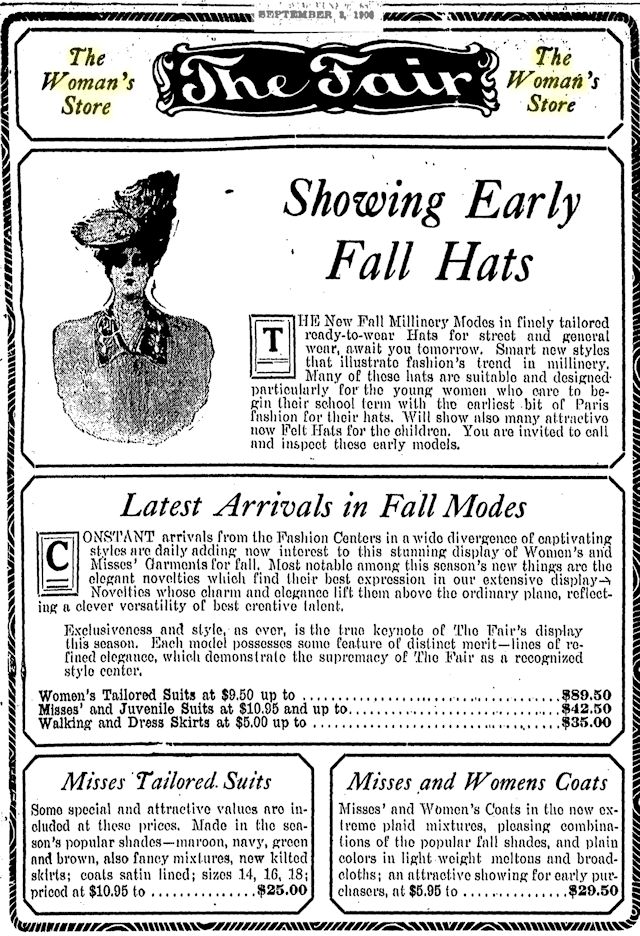 But in 1903 the Butts brothers sold out to Abe Mehl, the father of Max Mehl. Abe Mehl dropped the “woman’s store” slogan, and The Fair began using it.
But in 1903 the Butts brothers sold out to Abe Mehl, the father of Max Mehl. Abe Mehl dropped the “woman’s store” slogan, and The Fair began using it.
By 1908 The Fair had about seventy-five employees. The store had one horse-drawn wagon for deliveries. In-store customers hitched their horse-drawn buggy to a post in front of the store.
The interior of the store had a stamped-tin ceiling and ceiling fans. Customers did not hand their money to a cashier at a cash register at a counter. Instead their money was placed in a basket, which was reeled in on a chain by the cashier up on the mezzanine. The cashier then reeled the basket containing any change and a receipt back down to the customer. No money was kept on the first floor.
Those were indeed different times. More than sixty years later Lionel Bevan, who joined The Fair as a clerk in 1906, recalled: “Once . . . we had a ladies purse with a secret compartment for cigarettes in the window. Customers called us a bad influence and said we were deceptive. And when we first put women’s corsets in the window, they said it was indecent.”

By 1910 The Fair occupied all of the Scott-Harrold Building, stretching along 5th Street from Main to Houston.
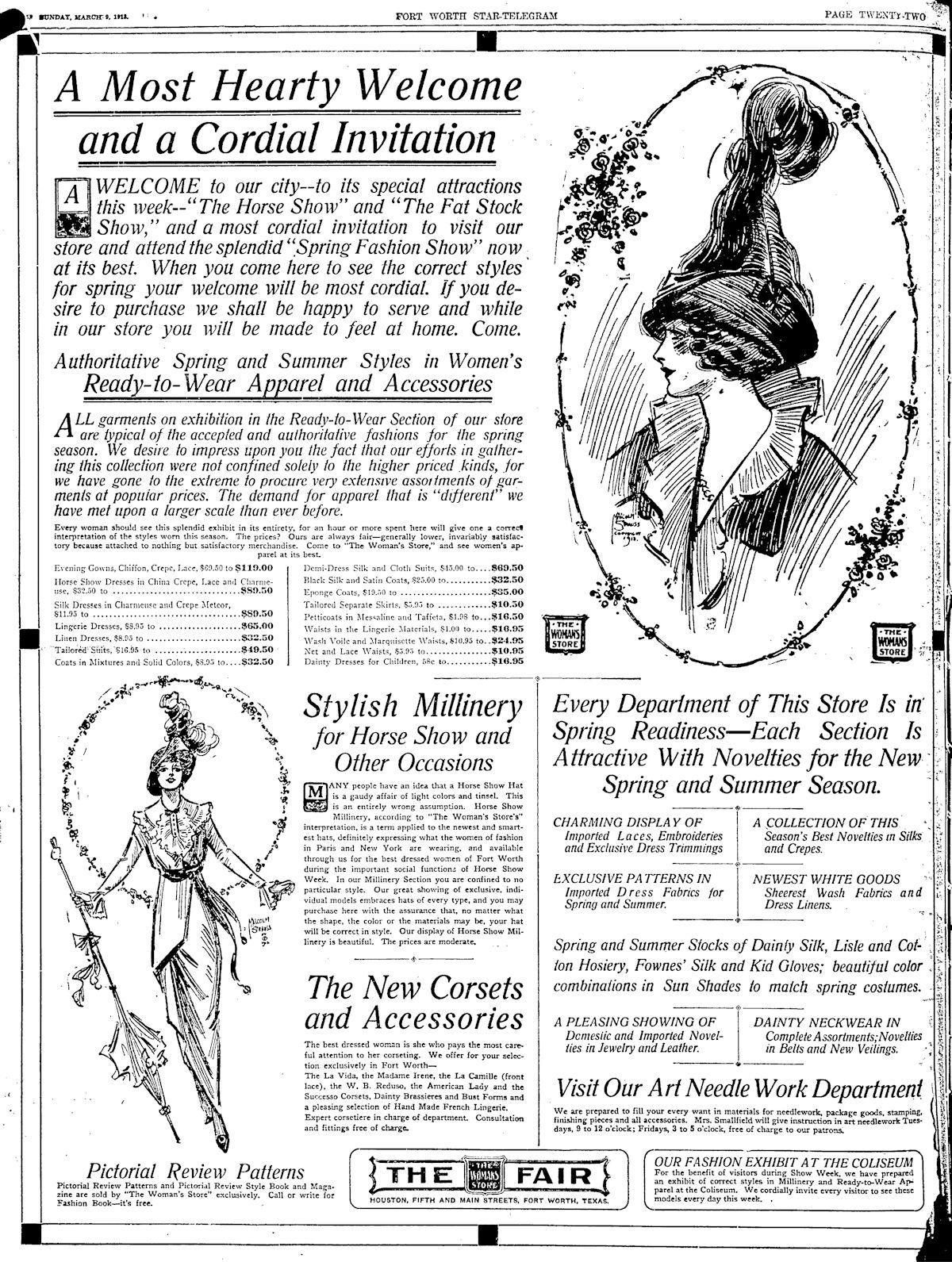 This ad was printed during the stock show of 1913. The Fair had a fashion exhibit at North Side Coliseum. The stock show was held on the North Side until moving to the Will Rogers complex in 1944.
This ad was printed during the stock show of 1913. The Fair had a fashion exhibit at North Side Coliseum. The stock show was held on the North Side until moving to the Will Rogers complex in 1944.
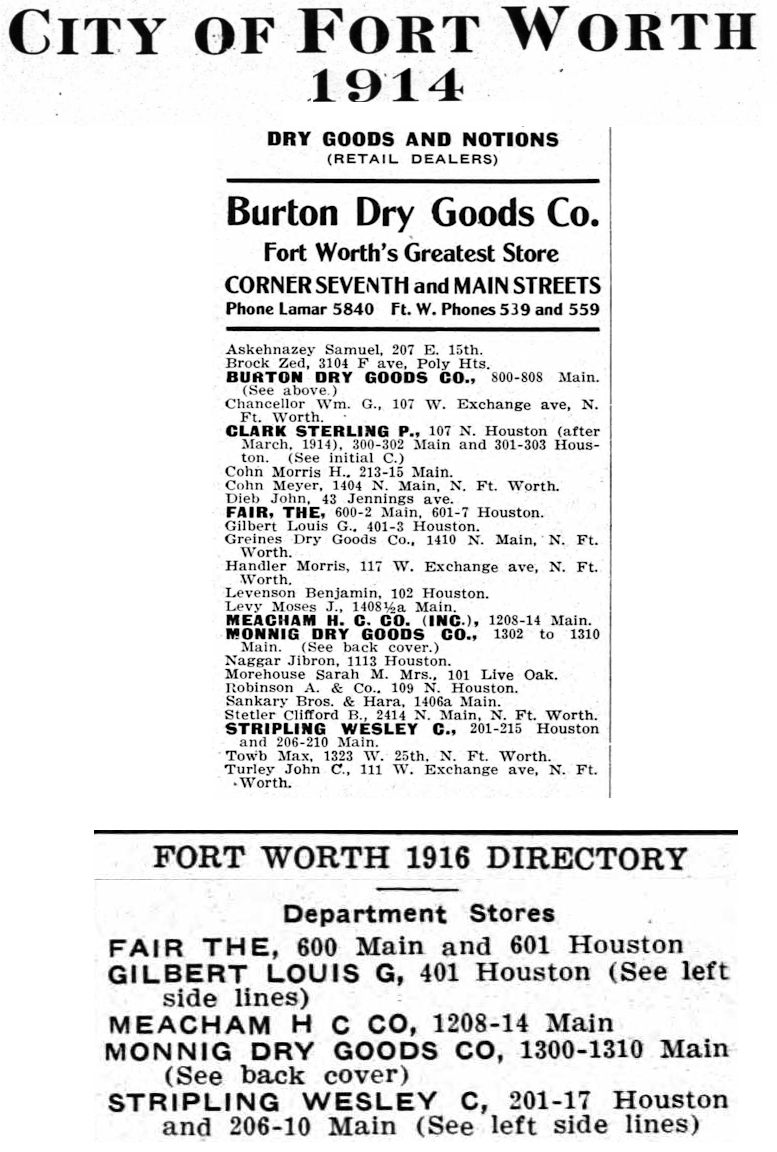 As late as 1914 the city directory called such stores “dry goods stores.” Not until 1916 was the term department store used.
As late as 1914 the city directory called such stores “dry goods stores.” Not until 1916 was the term department store used.
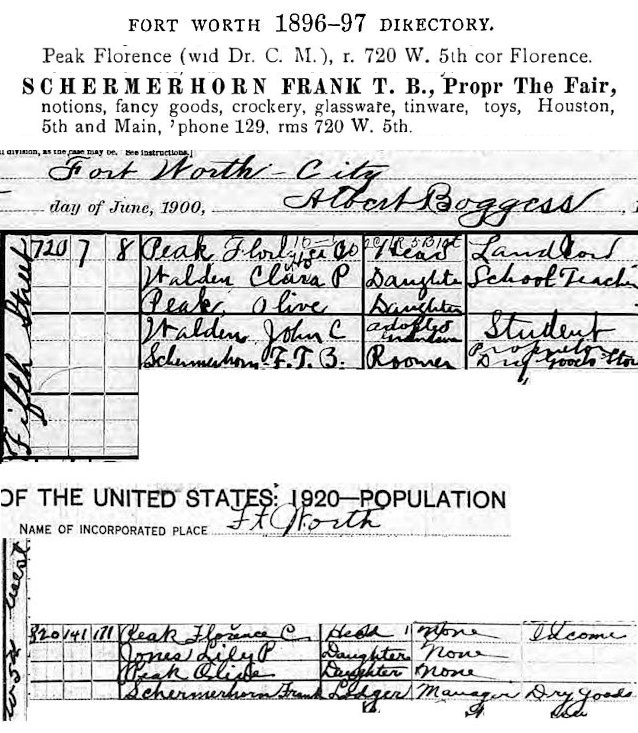 From at least 1896 to 1920 Frank Schermerhorn boarded with Florence Peak, who lived at the intersection of West 5th Street and the street named for her. Florence Peak was the widow of Dr. Carroll Peak. The Peaks had lived in Fort Worth since 1853.
From at least 1896 to 1920 Frank Schermerhorn boarded with Florence Peak, who lived at the intersection of West 5th Street and the street named for her. Florence Peak was the widow of Dr. Carroll Peak. The Peaks had lived in Fort Worth since 1853.
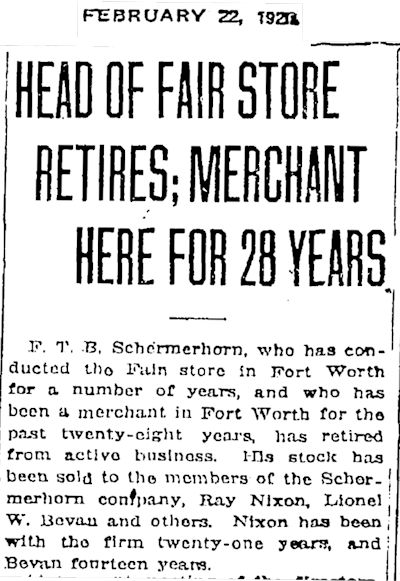 In 1920 Schermerhorn retired. His company was taken over by Ray Nixon and Lionel Bevan. Nixon, who had joined the company in 1899, became president.
In 1920 Schermerhorn retired. His company was taken over by Ray Nixon and Lionel Bevan. Nixon, who had joined the company in 1899, became president.
Frank Schermerhorn apparently moved from Fort Worth soon after he retired. He does not appear in news stories, city directories, or cemetery records after 1920.
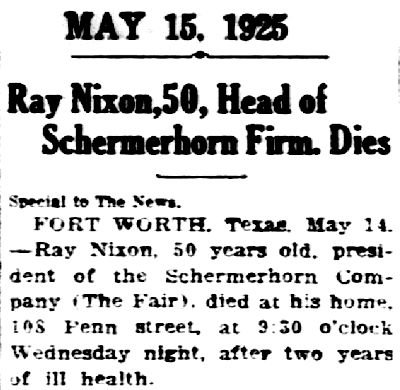 Ray Nixon died in 1925, and Lionel Bevan became president of the company.
Ray Nixon died in 1925, and Lionel Bevan became president of the company.
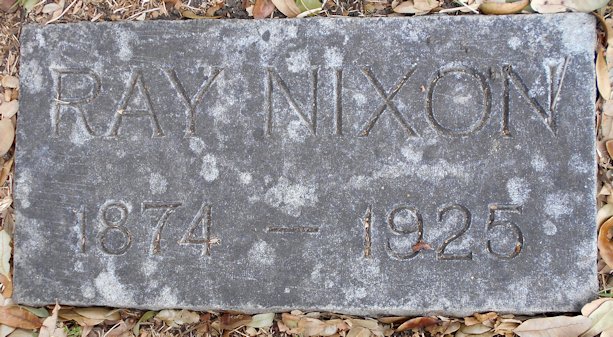 Ray Nixon is buried in Greenwood Cemetery.
Ray Nixon is buried in Greenwood Cemetery.
 Fast-forward five years. In 1930 The Fair moved from the Scott-Harrold Building into a magnificent new home at 307 West 7th Street.
Fast-forward five years. In 1930 The Fair moved from the Scott-Harrold Building into a magnificent new home at 307 West 7th Street.
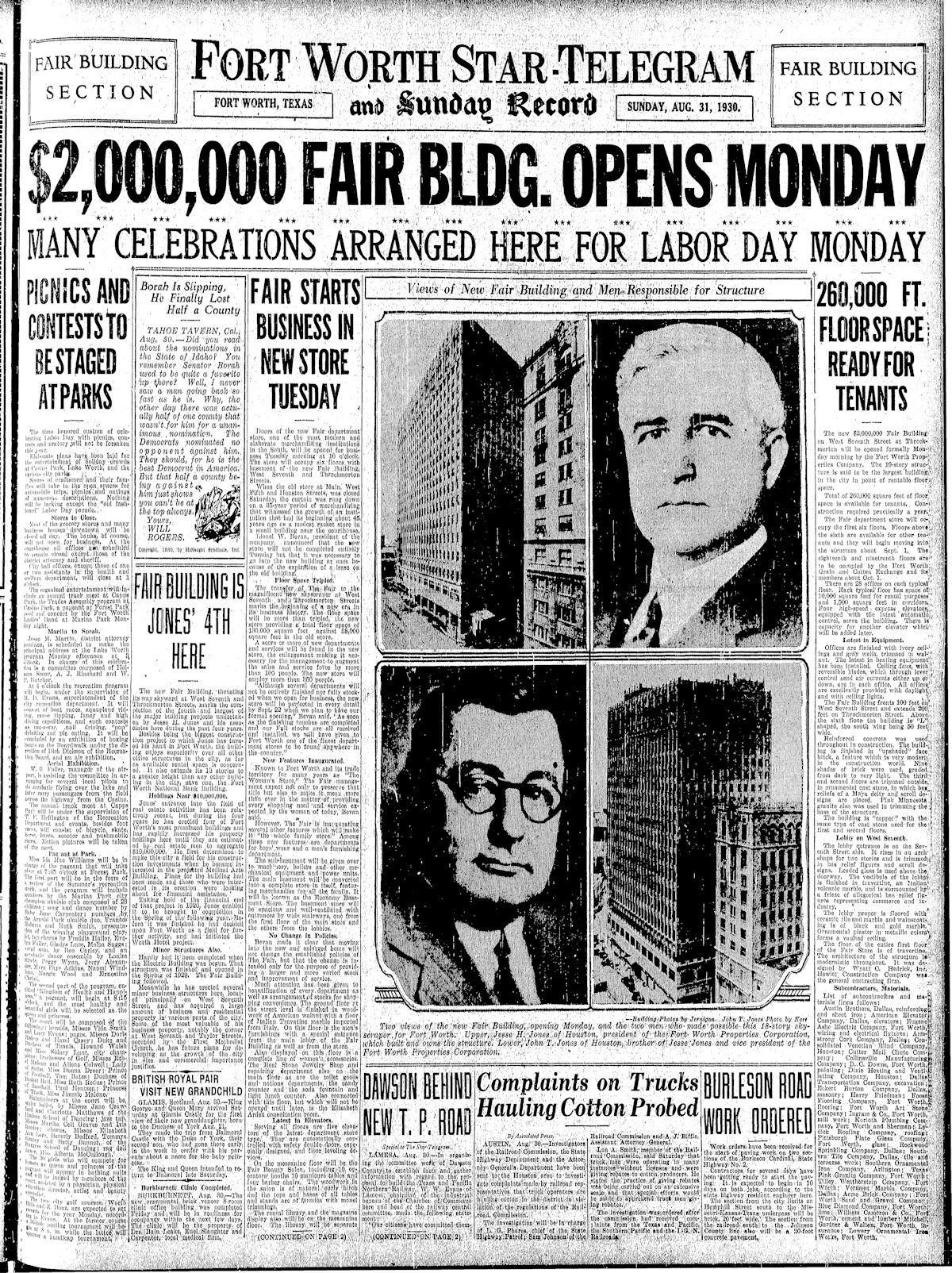 In 1930 Houston entrepreneur Jesse Jones was throwing money around in Fort Worth like there was no Great Depression. He was completing a transformation of four blocks along West 7th Street downtown:
In 1930 Houston entrepreneur Jesse Jones was throwing money around in Fort Worth like there was no Great Depression. He was completing a transformation of four blocks along West 7th Street downtown:
Medical Arts Building (1927)
Worth Hotel and Theater (1927)
Electric Building (1929) and Hollywood Theater (1930)
The Fair Building (1930)
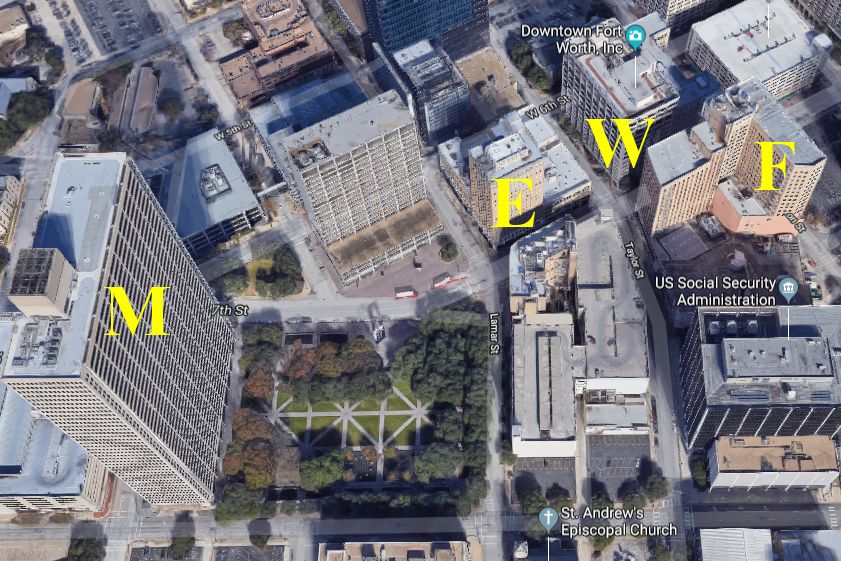 Satellite photo shows the location of the Jesse Jones buildings. Two of the four survive.
Satellite photo shows the location of the Jesse Jones buildings. Two of the four survive.
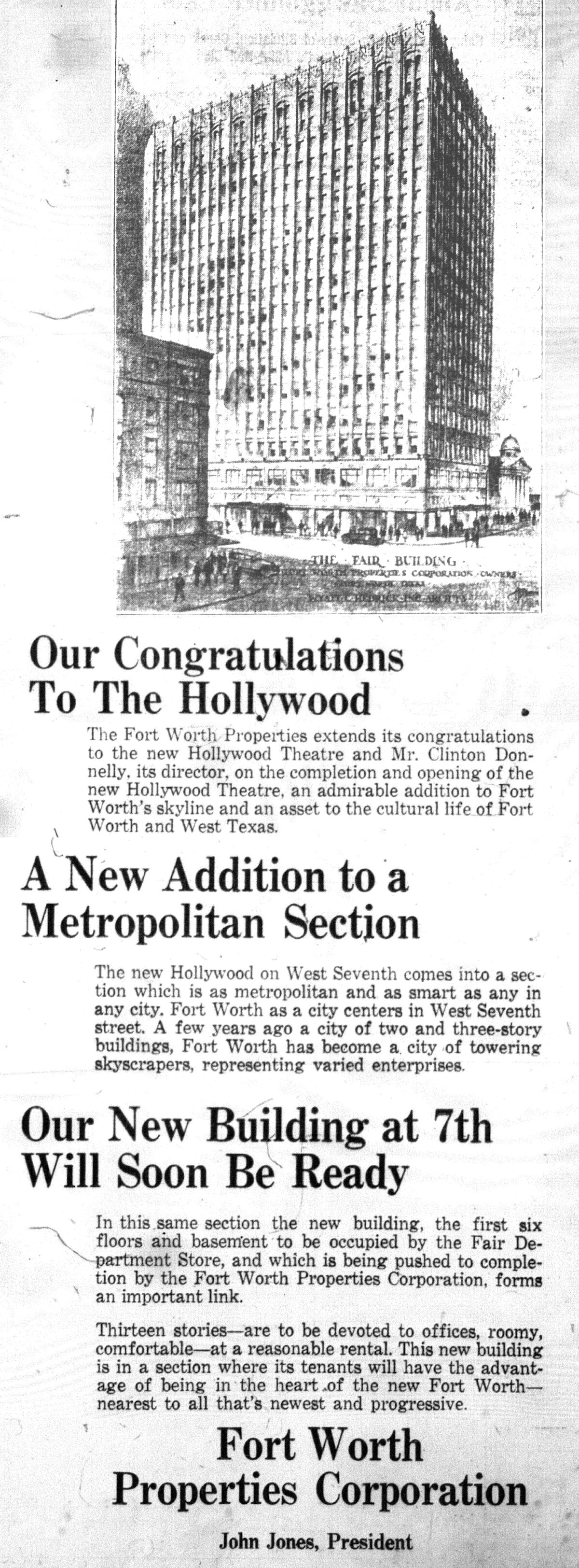 Fort Worth Properties Corporation was the Fort Worth branch of Jesse Jones. It was overseen by his brother John. This ad in the April 16, 1930 Press by Fort Worth Properties reads “Our Congratulations to the Hollywood” but features a sketch of its The Fair Building.
Fort Worth Properties Corporation was the Fort Worth branch of Jesse Jones. It was overseen by his brother John. This ad in the April 16, 1930 Press by Fort Worth Properties reads “Our Congratulations to the Hollywood” but features a sketch of its The Fair Building.
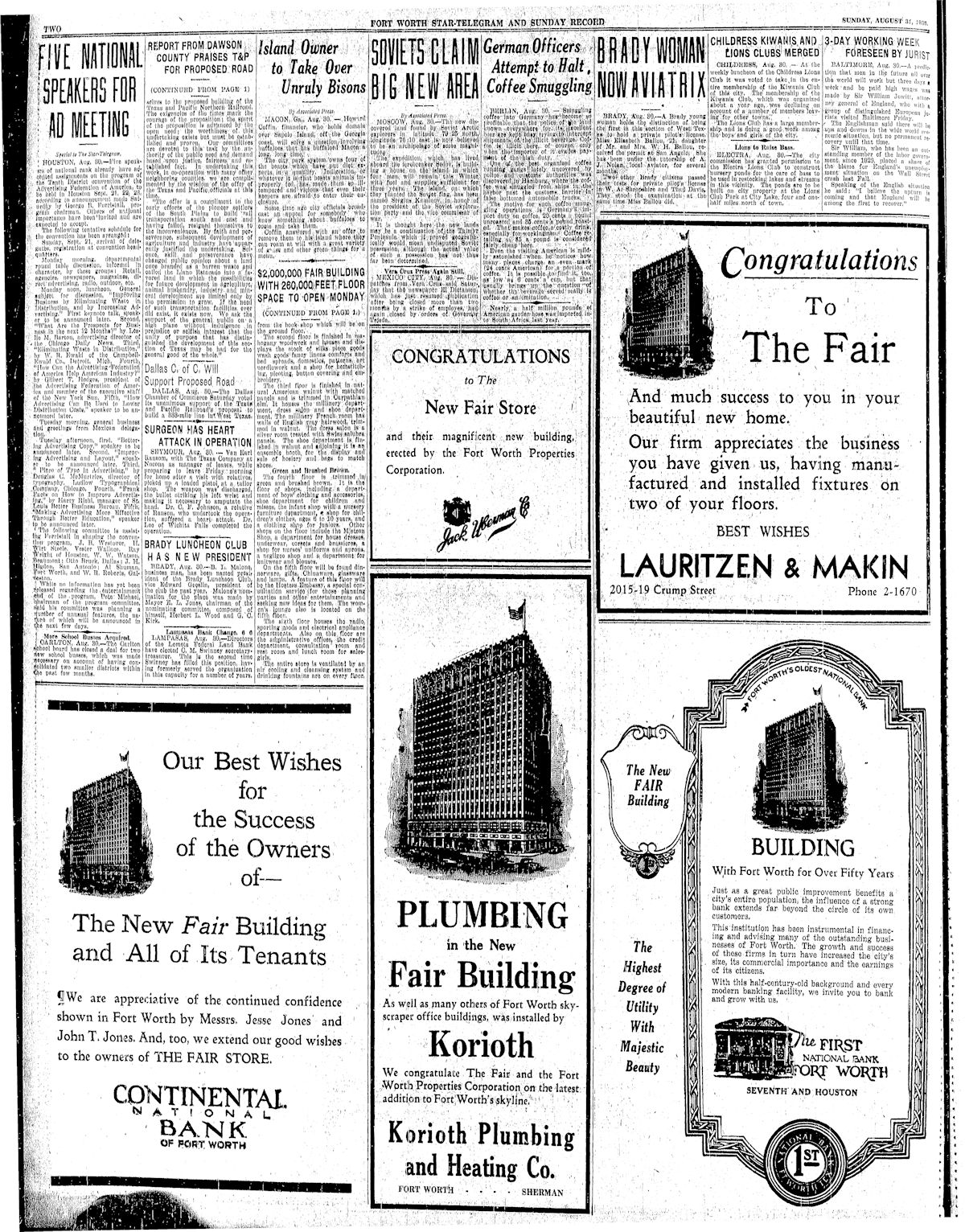 The Star-Telegram printed a special section in honor of the opening of The Fair Building, but the section was mostly congratulatory ads by competing stores, tenants of the new building, and companies that contributed to construction of the building.
The Star-Telegram printed a special section in honor of the opening of The Fair Building, but the section was mostly congratulatory ads by competing stores, tenants of the new building, and companies that contributed to construction of the building.
(Three years after The Fair moved out of the Scott-Harrold Building, R. E. Cox moved in and stayed until 1946, when Cox moved to the Fort Worth Club Building after Fakes Department Store moved out and went to 406 Houston Street. Musical stores, anyone?)
The new The Fair Building was nineteen stories tall, its architecture a mixture of art deco and gothic.
The Fair occupied the first six floors. The store’s interior was lavish: marble floors, mahogany and walnut wainscoting.
The emphasis of “the woman’s store” was still on women’s clothing, although the store also sold sporting goods, electrical appliances, kitchenware, and clothing for children, including boys. There was a modest men’s clothing shop (with its own entrance from the sidewalk).
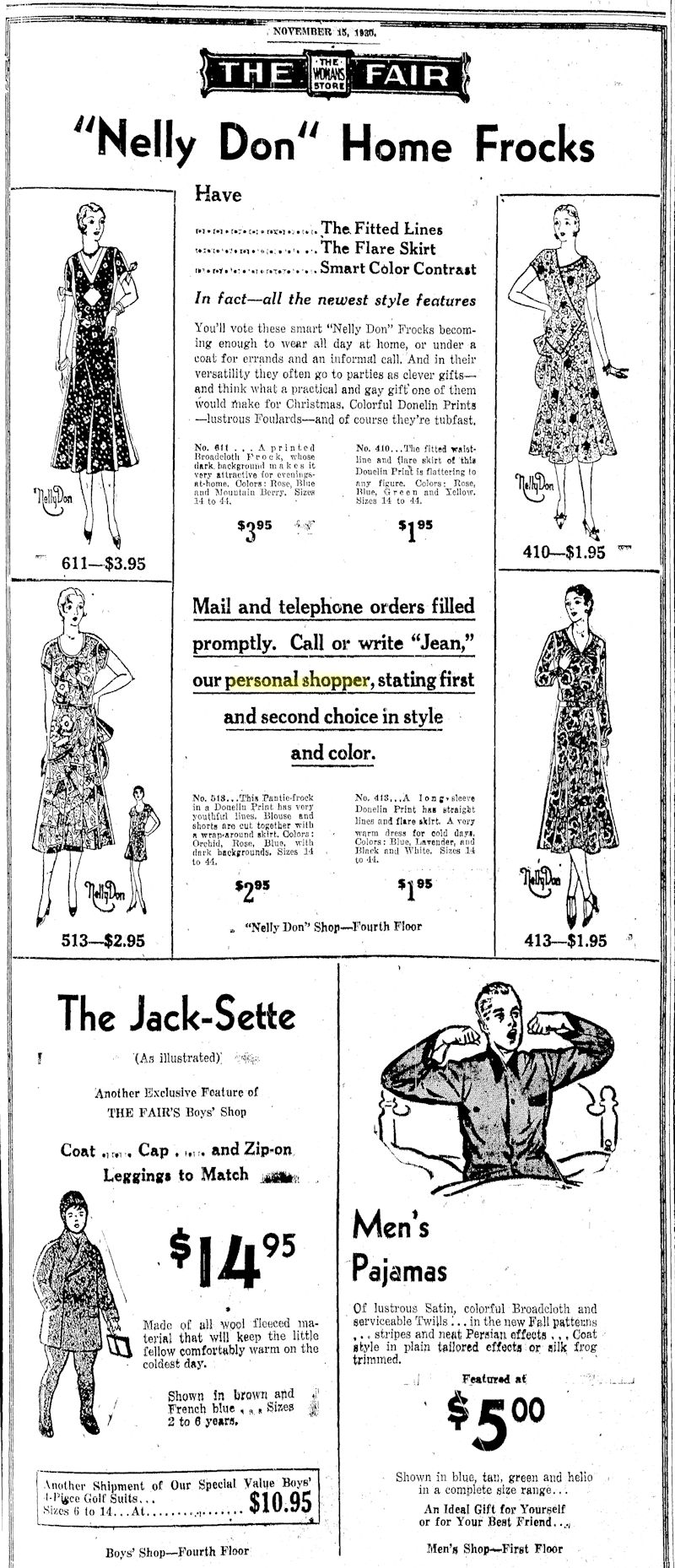 This 1930 ad features the boys’ and men’s shops. Note that The Fair, like most of the downtown department stores, offered customers the option of shopping by phone or mail via a personal shopper.
This 1930 ad features the boys’ and men’s shops. Note that The Fair, like most of the downtown department stores, offered customers the option of shopping by phone or mail via a personal shopper.
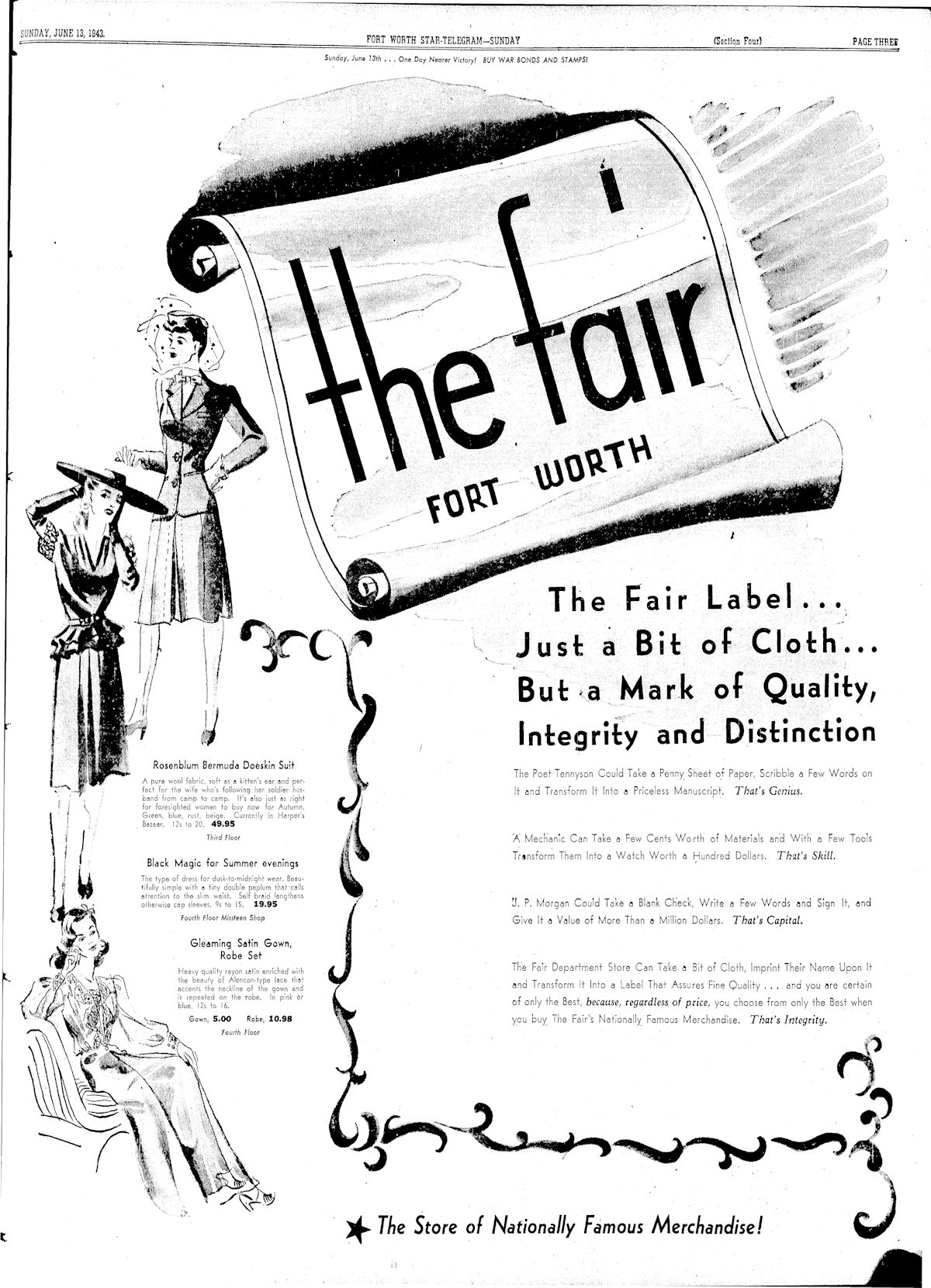 The Fair had its own label.
The Fair had its own label.
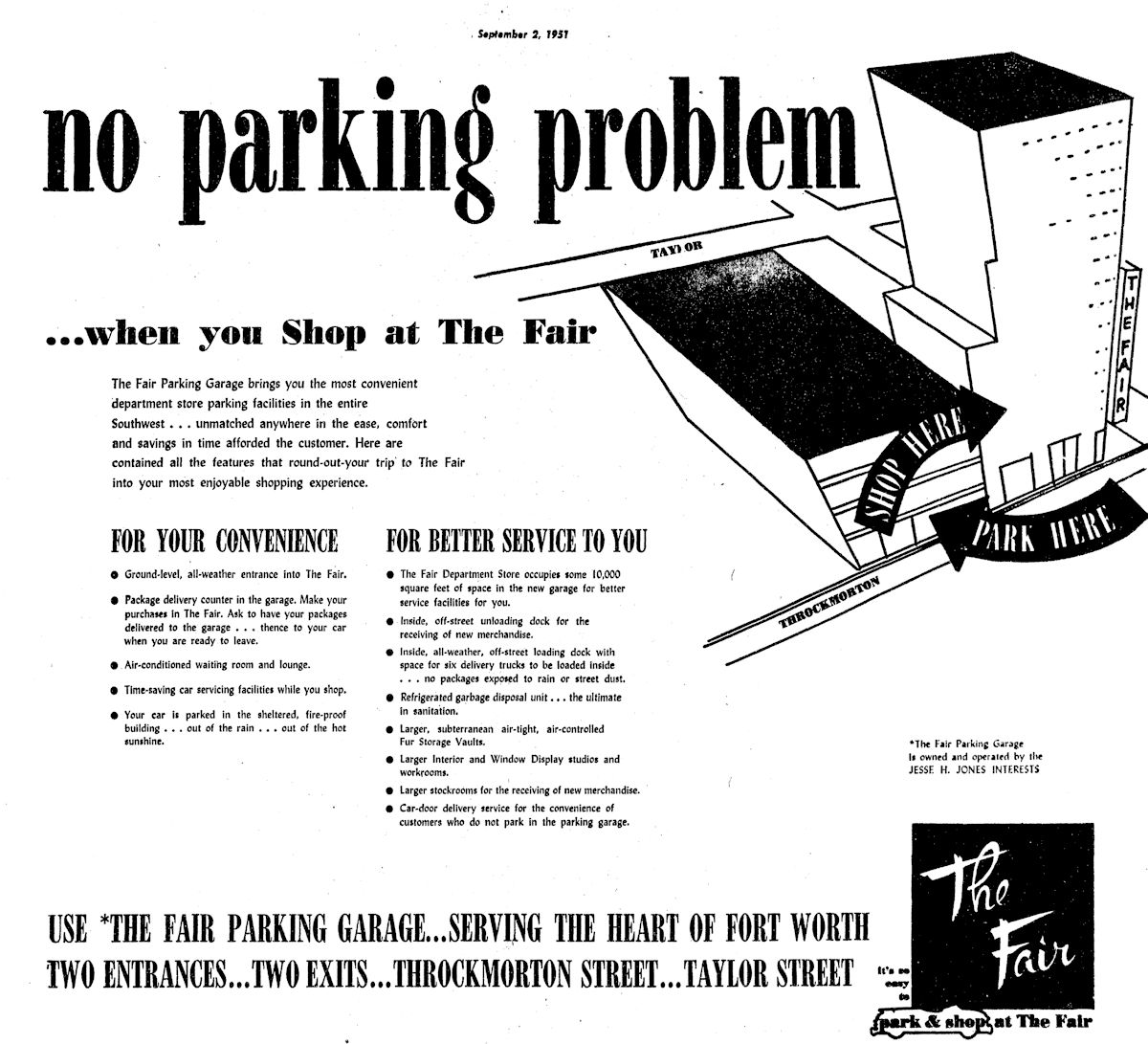 And its own parking garage.
And its own parking garage.
Stores such as The Fair that survived into the second half of the twentieth century competed in a world that their founders could not imagine. Now a retail company could not survive with just a downtown store. Suburban satellite stores were opening in places that had been open countryside in Frank Schermerhorn’s day.
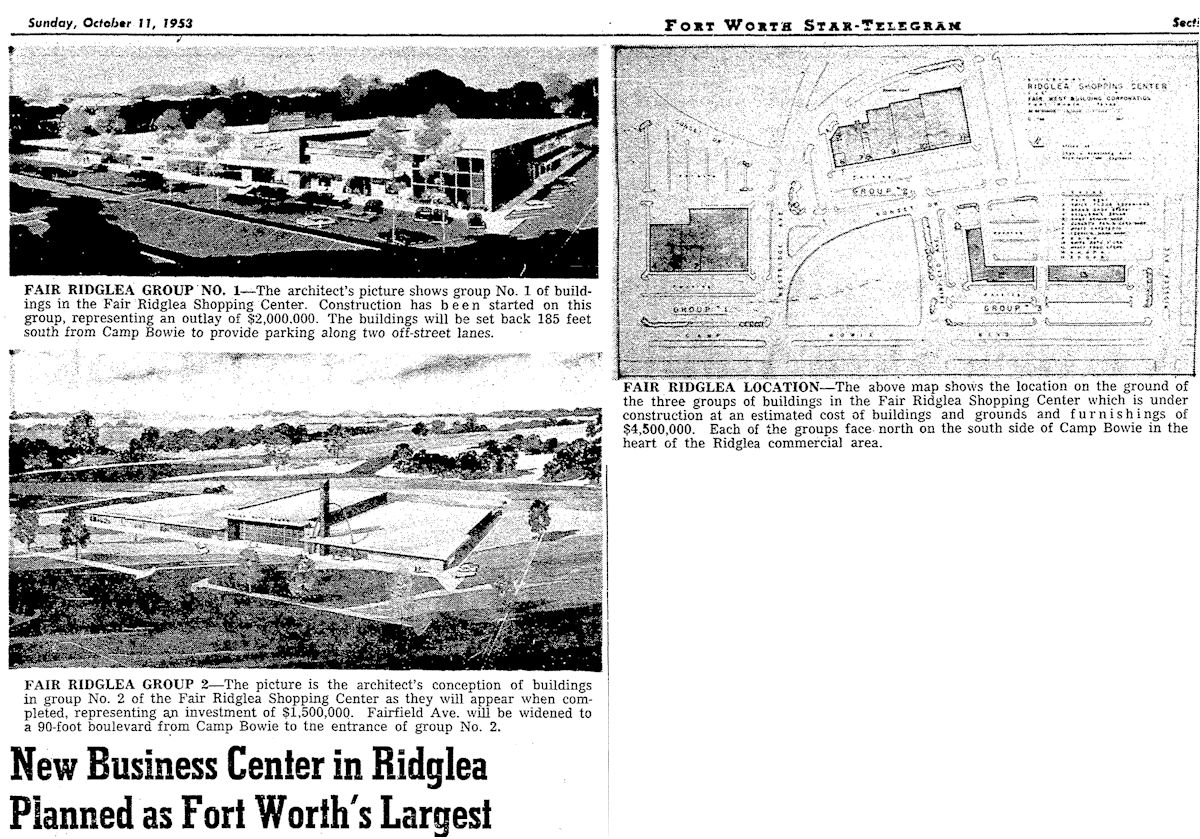
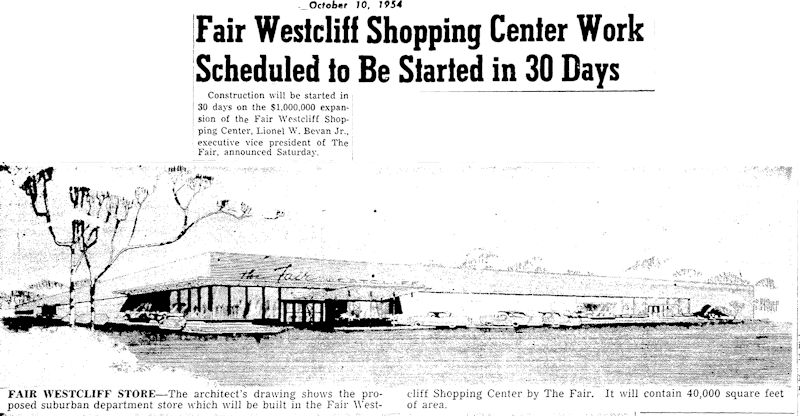 The Fair opened Fair Oaks (River Oaks) in 1951, Fair East (Meadowbrook) in 1953, Fair Ridglea in 1954, and Fair Westcliff in 1955.
The Fair opened Fair Oaks (River Oaks) in 1951, Fair East (Meadowbrook) in 1953, Fair Ridglea in 1954, and Fair Westcliff in 1955.
 And Fair Arlington in 1959.
And Fair Arlington in 1959.
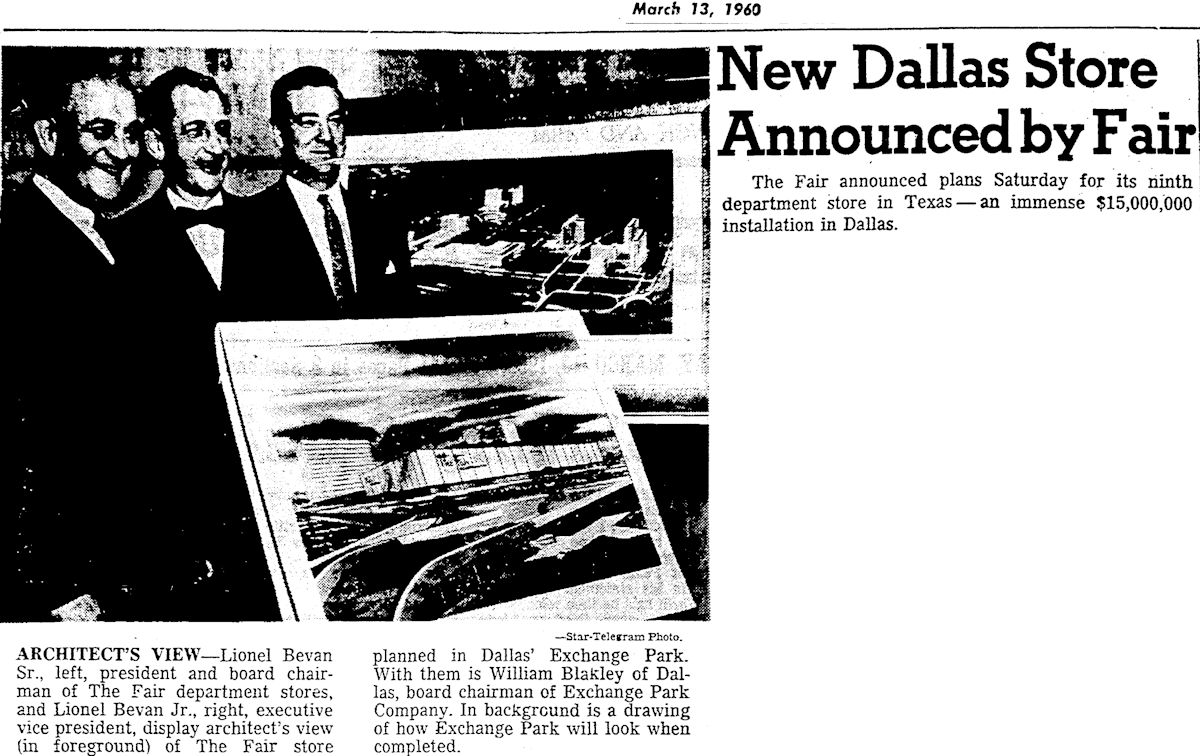 In 1960, with Lionel Bevan still president, The Fair opened its ninth store in Texas—in Dallas.
In 1960, with Lionel Bevan still president, The Fair opened its ninth store in Texas—in Dallas.
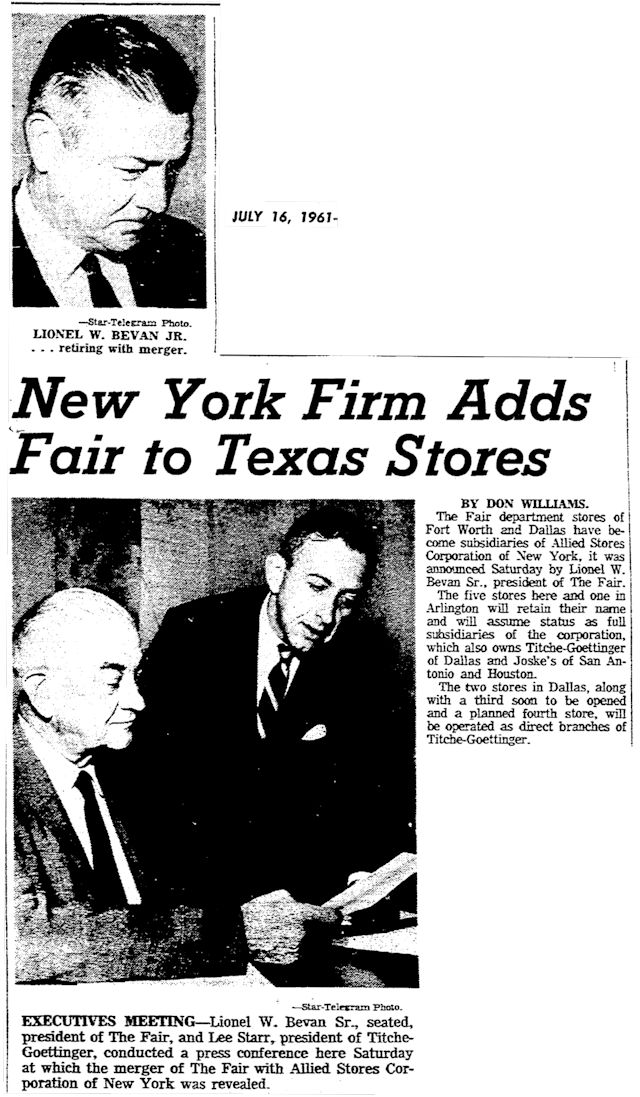 Another business tactic that would surprise Frank Schermerhorn was the purchase of hometown retail chains by out-of-town companies. In 1961 Allied Stores Corporation of New York bought The Fair stores. Allied also owned Titche-Goettinger’s and Joske’s.
Another business tactic that would surprise Frank Schermerhorn was the purchase of hometown retail chains by out-of-town companies. In 1961 Allied Stores Corporation of New York bought The Fair stores. Allied also owned Titche-Goettinger’s and Joske’s.
Lionel Bevan and his son retired.
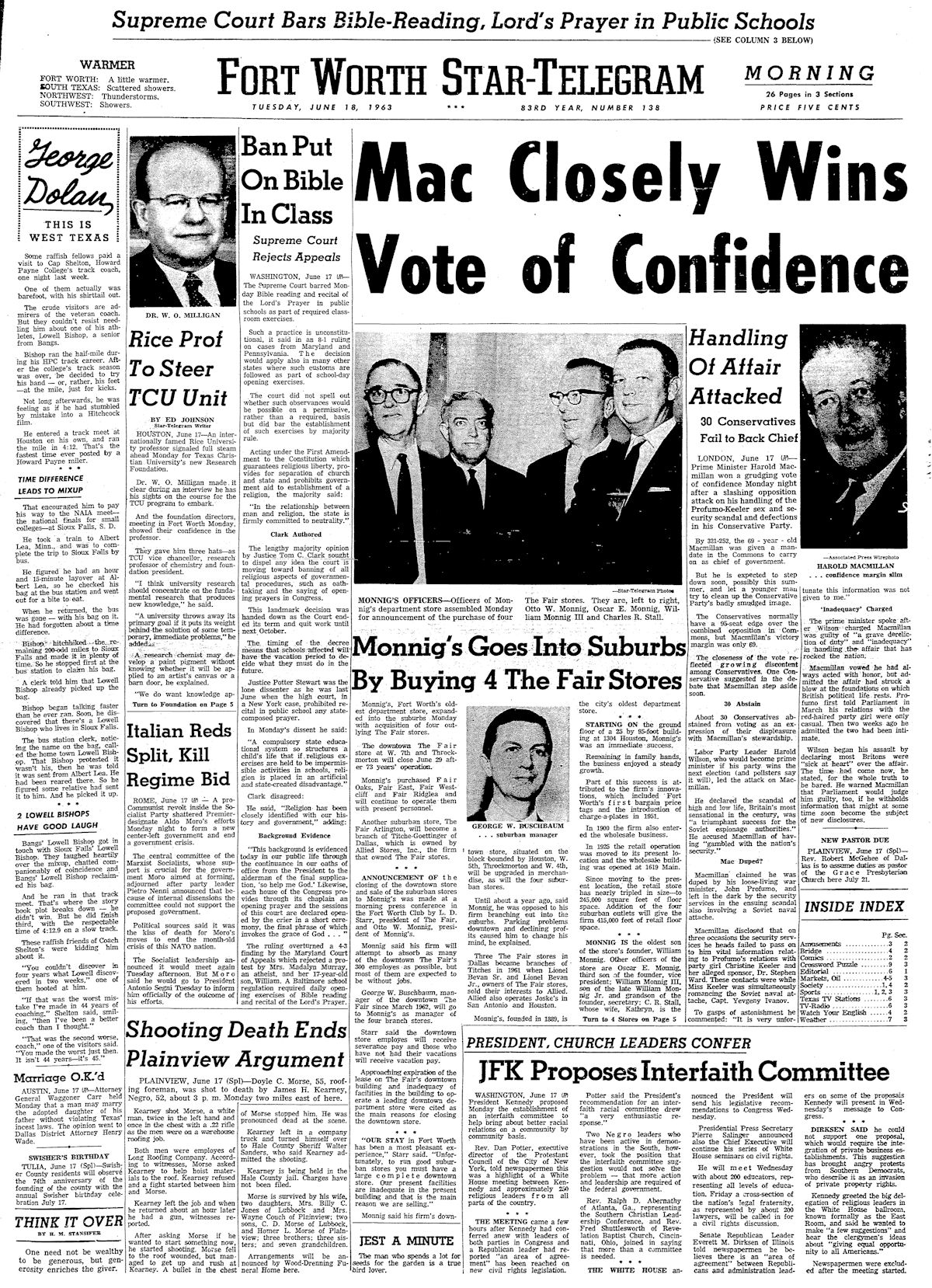 Ah, but in 1963 Monnig’s bought The Fair stores from Allied.
Ah, but in 1963 Monnig’s bought The Fair stores from Allied.

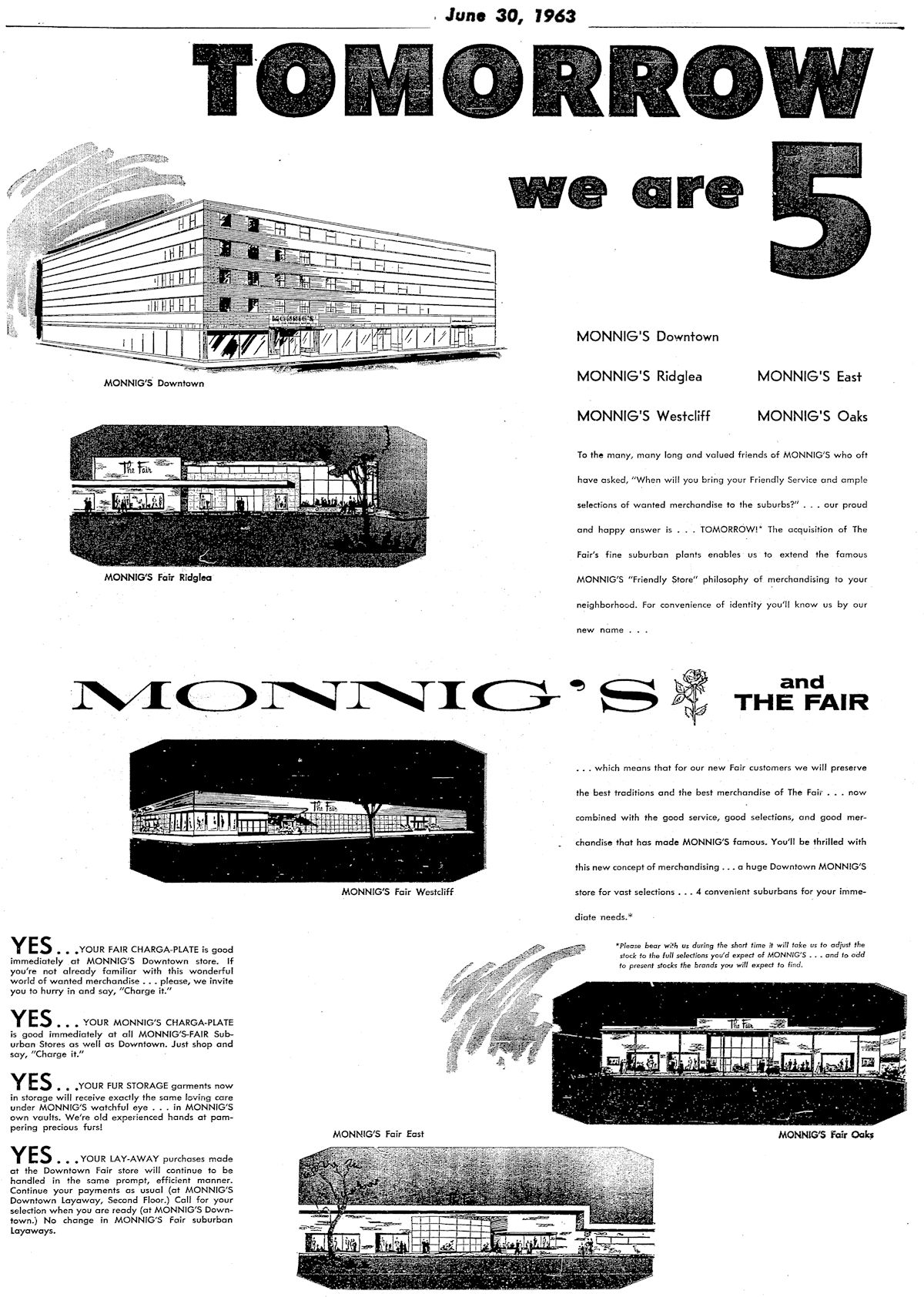 Ah, but Monnig’s closed The Fair’s downtown building and rebranded The Fair’s four suburban stores in Fort Worth.
Ah, but Monnig’s closed The Fair’s downtown building and rebranded The Fair’s four suburban stores in Fort Worth.
After seventy-three years The Fair was gone.
 But the grand downtown home of The Fair, designed by Wyatt Hedrick and financed by Jesse Jones, still stands.
But the grand downtown home of The Fair, designed by Wyatt Hedrick and financed by Jesse Jones, still stands.
In 1964 the Bank of Commerce and World Service Life bought the building, and it was renamed the “Commerce Building.” In 2011 the Star-Telegram sold its building (1920) one block away and moved its newspaper operation to leased space in the Commerce Building, which was renamed the “Star-Telegram Building.”
Buildings that housed downtown Sanger’s and Meacham’s department stores also survive.
 And at least one building that housed one of The Fair’s suburban stores still stands. This is the building in the Westcliff shopping center.
And at least one building that housed one of The Fair’s suburban stores still stands. This is the building in the Westcliff shopping center.






Mom bought much of our clothes at the Fair in Lafayette, LA; where I grew up. My sister worked there for a while.
It outlasted the Fort Worth downtown location by at least a decade, into the 1970s. The opening of a suburban mall and other stores away from downtown and the Oil Center finally did it in.